It’s been a month since Democrats, who needed to flip 23 GOP-held seats in order to take back the House, routed Republicans in the midterms. And while regaining control of the House for the first time in eight years hasn’t been in doubt since a few hours after the first polls closed on Election Day, the exact margin remained in question due to a handful of races that required additional time to count votes.
But now that almost all of those too-close-to-call races have been called for Democrats, the number of flipped seats — which seemed likely to be in the low-30s on the morning after the midterms — reached 40 on Thursday. It was only the second time that Democrats achieved such a dramatic swing in a single election during the past half-century.
NBC News has declared T.J. Cox (D) the apparent winner over Rep. David Valadao (R) in CA-21, bringing Democrats to a net gain of 40 House seats
— Steve Kornacki (@SteveKornacki) December 6, 2018
Here is how the 2018 midterms stack up to the party’s other big House gains over the last 50 years.
1974: 49 flips

Less than three months after President Richard Nixon resigned over the Watergate scandal, Democrats expanded a 50-seat House margin to 147 by flipping 49 GOP-held districts.
In the 94th Congress, House Speaker Carl Albert (D-OK) oversaw the expansion of protections for the environment and individuals with disabilities, and passed numerous government reforms aimed at increasing transparency — and averting another Watergate.
Among the freshmen members of Democrats’ “Watergate wave” were Reps. Chris Dodd (CT), Max Baucus (MT), Tom Harkin (IA), Norman Mineta (CA), Henry Waxman (CA), Paul Simon (IL), and Paul Tsongas (MA).
2018: 40 flips

The expected “blue wave” of opposition to President Donald Trump‘s unpopular policies showed up in a big way last month, as Democrats flipped seats in red states like Oklahoma, South Carolina, Kansas, Utah, Iowa, Texas, and Georgia.
The diverse 116th Congress will feature a record number of women, including the youngest-ever congresswoman, the first pair of Muslim congresswomen, as well as the first pair of Native American congresswomen.
Though only time will tell which freshmen members of the Democratic “blue wave” make the biggest impact on U.S. politics, Reps.-elect Alexandria Ocasio-Cortez (NY), Ilhan Omar (MN), Rashida Tlaib (MI), and Ayanna Pressley (MA) have earned a lot of attention in new House majority that will be seated on January 3.
2006: 32 flips
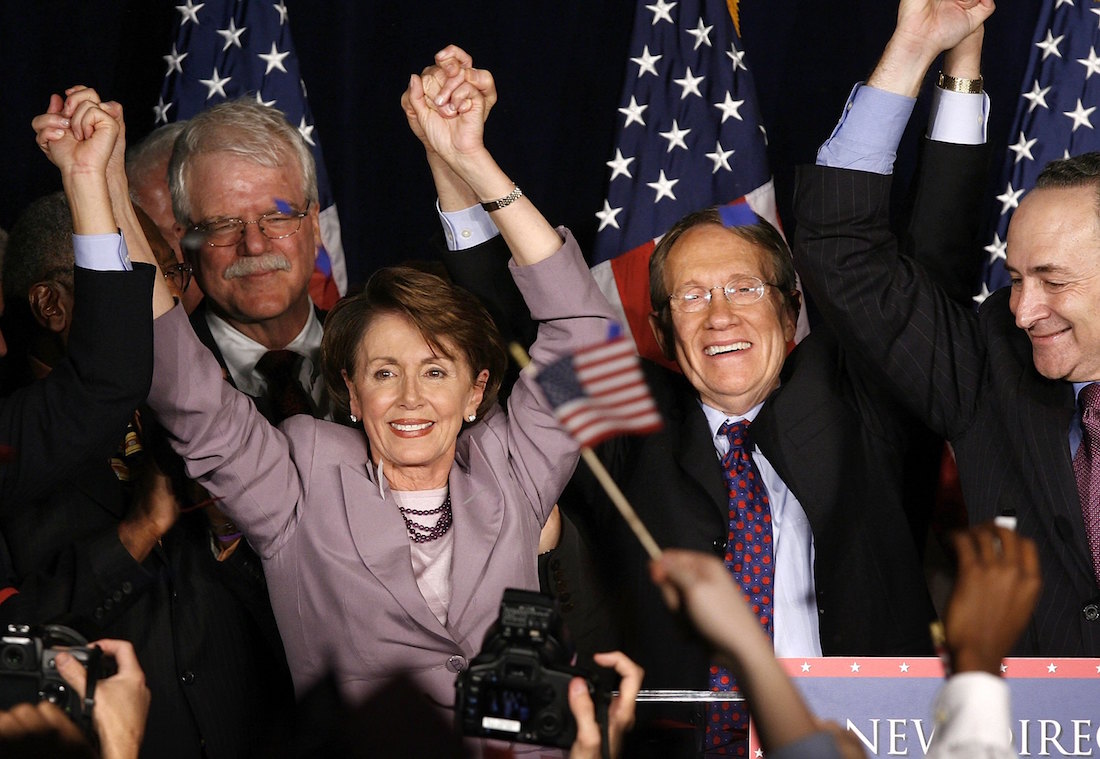
Amid deep disapproval of President George W. Bush over the Iraq War, his administration’s mishandling of Hurricane Katrina, and the first signs of what later became known as the Great Recession, Democrats regained control of both the House and Senate, making House Minority Leader Nancy Pelosi (D-CA) the highest-ranking woman in the history of American government — a position the California congresswoman held until 2011 and is poised to reclaim next month.
The 110th Congress, which marked the first time that Democrats controlled both chambers since the 1994 midterms, passed legislation aimed at withdrawing the U.S. military from Iraq, improving energy efficiency, and increasing the disclosure requirements for lobbying and earmarks.
New members of the Democratic Congress after the 2006 elections included Reps. Kirsten Gillibrand (NY), Chris Murphy (CT), Mazie Hirono (HI), Joe Donnelly (IN), Keith Ellison (MN), and Gabby Giffords (AZ).
1982: 26 flips

Though President Ronald Reagan is now considered a conservative icon, the first two years of his presidency did not go too well. As a recession stretched on and the then-71-year-old president faced growing unpopularity over proposing massive cuts to government programs, Democrats expanded their majority under House Speaker Tip O’Neill (MA) to over 100 seats by flipping 26 GOP-held districts.
The 98th Congress’ Democratic-led House primarily served as a check on Reagan’s administration since Republicans controlled the Senate, but it was responsible for criminal sentencing reforms, making Martin Luther King Jr. Day a federal holiday, and turning the National Archives and Records Administration into an independent agency.
Democratic Reps. Harry Reid (NV), Dick Durbin (IL), Barbara Boxer (CA), Tom Carper (DE), Bill Richardson (NM), Sandy Levin (MI), Marcy Kaptur (OH), and Jim Cooper (TN) were elected to Congress for the first time in 1982.
2008: 21 flips
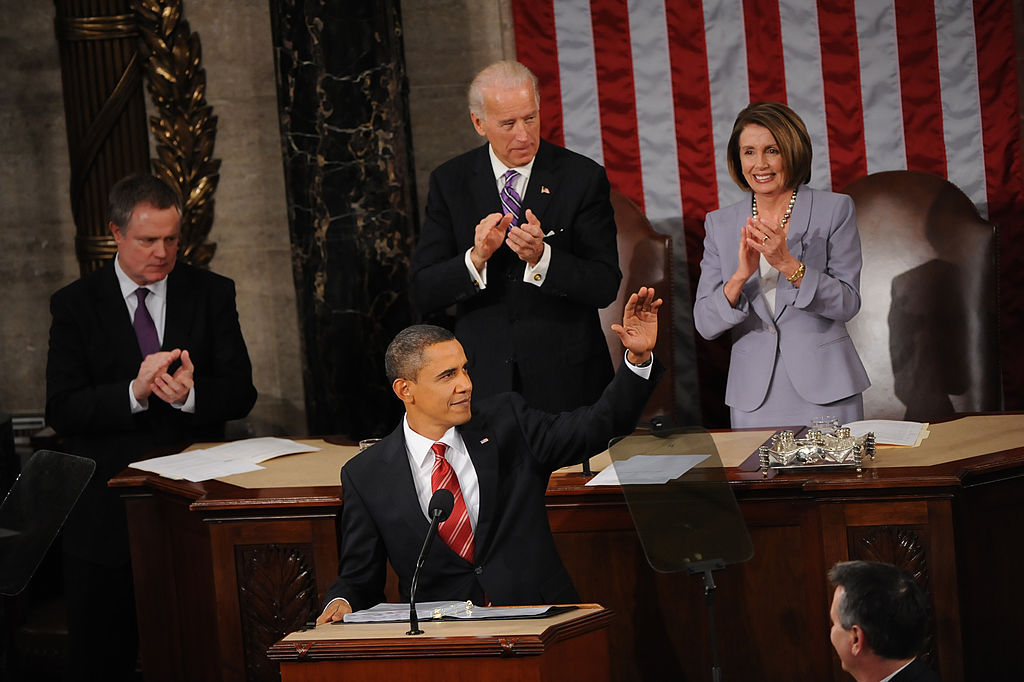
Despite already controlling both chambers of Congress, Democrats used the coattails of then-Sen. Barack Obama (IL) to add 21 more seats to their House majority amid heavy Republican losses due to Bush’s unpopularity and the Great Recession.
The Democratic-led 111th Congress — which has been called one of the most productive in history — passed Obamacare, an economic stimulus package to help the struggling economy, Dodd-Frank financial regulations, an expansion of the legal definition of hate crimes, the Lilly Ledbetter Fair Pay Act, the repeal of “Don’t Ask, Don’t Tell,” a new nuclear arms treaty with Russia, and the Zadroga Bill for emergency responders of the terrorist attacks of September 11, 2001.
Newly-elected Democratic House members included Reps. Gary Peters (MI), Martin Heinrich (NM), Gerry Connolly (VA), Jim Himes (CT), Kurt Schrader (OR), Ann Kirkpatrick (AZ), Dina Titus (NV), and Tom Perriello (VA).
GOP waves
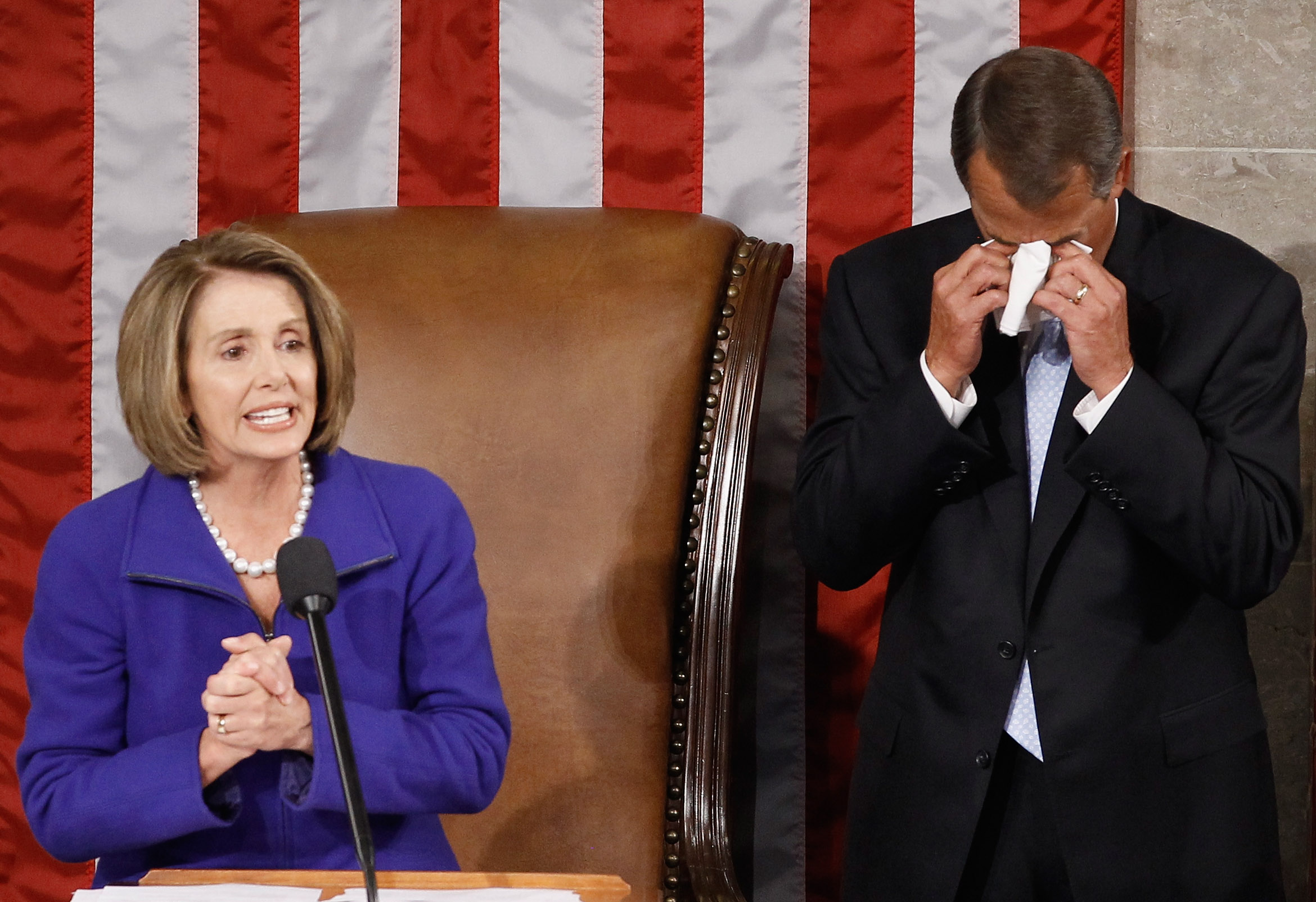
Democrats’ recent 40 House flips have only been exceeded by Republicans on two occasions during the past half-century.
In 2010, the GOP flipped 63 Democratic-held seats as the unemployment level hovered around 10 percent during the Great Recession, making Minority Leader John Boehner (R-OH) the Speaker of the House midway through Obama’s first term.
In 1994, Republicans swung 54 House seats and regained control of the chamber for the first time since the 1954 midterms, as Minority Whip Newt Gingrich (R-GA) became House Speaker amid the unpopular start to President Bill Clinton‘s stint in the White House.
This is 40
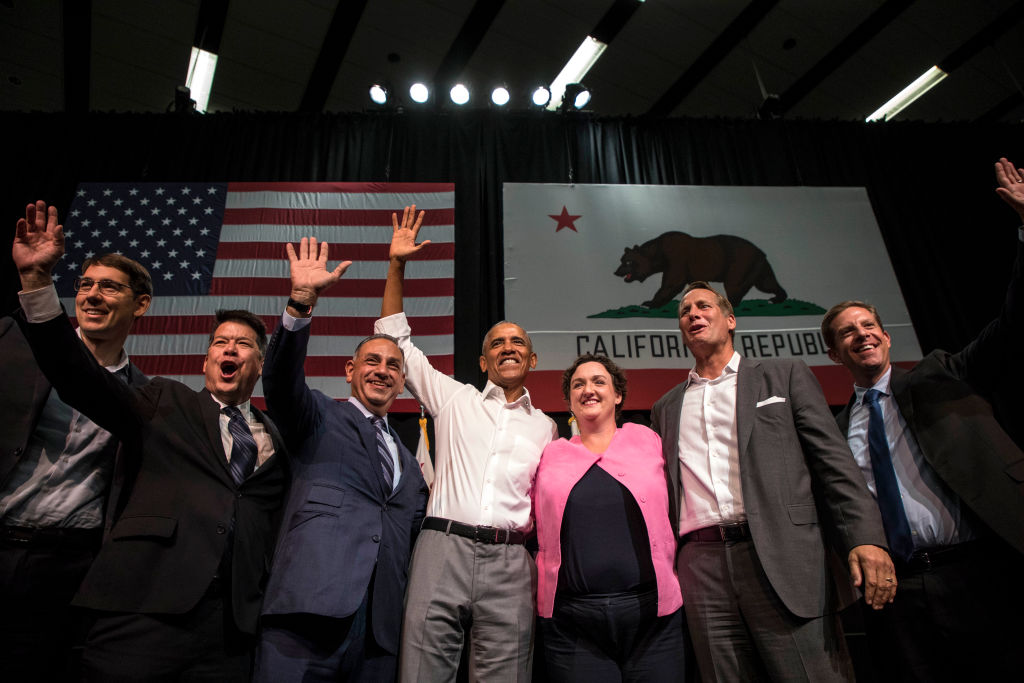
It seemed unlikely that Democrats would notch their 40th flip as Rep. David Valadao (R-CA) had been declared the winner over businessman TJ Cox (D-CA) on Election Day by almost every media outlet.
However, as votes continued to be counted, the Democrat slowly ate away at the incumbent congressman’s lead in Fresno’s 21st congressional district, until outlets began retracting their calls late last month.
Valadao’s defeat means all seven California Republicans who represented districts that voted for former Secretary of State Hillary Clinton (D) in the 2016 presidential election have lost their jobs. And Orange County, the wealthy Los Angeles suburbs that are considered the birthplace of the “conservative movement,” will now have no GOP members of Congress representing it for the first time since the 1930s.
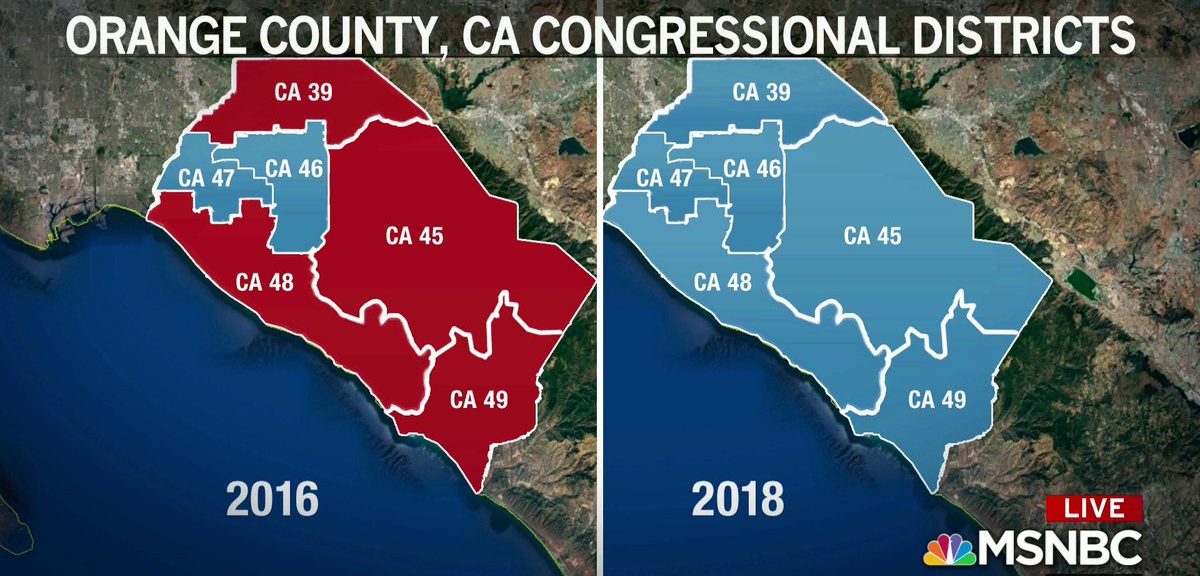
But Democrats didn’t just unseat Republicans in blue states last month.
The “blue wave” flipped dozens of pro-Trump districts
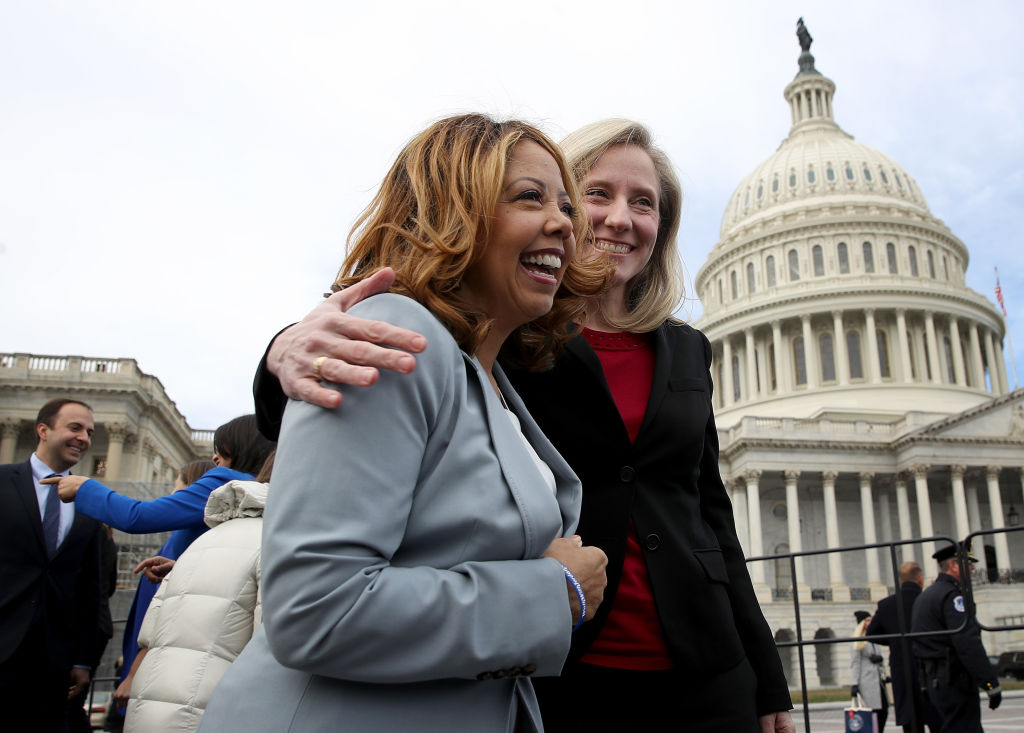
According to the Cook Partisan Voting Index, which “measures how each district performs at the presidential level compared to the nation as a whole,” Democrats’ wins in states that Trump captured in 2016 included:
- Ben McAdams (UT) in the Salt Lake City area’s R+13 district
- Kendra Horn (OK) in Oklahoma City’s R+10 district
- Joe Cunningham (SC) in Charleston’s R+10 district
- Lucy McBath (GA) in the Atlanta suburbs’ R+8 district that was once represented by Gingrich
- Lizzie Fletcher (TX) in the Houston suburbs’ R+7 district
- Colin Allred (TX) in the Dallas’ suburbs R+5 district
- Sharice Davids (KS) in Kansas City’s R+4 district
- Elissa Slotkin (MI) in an R+4 district that contains Lansing and Detroit’s suburbs
- Haley Stevens (MI) in the Detroit suburbs’ R+4 district
- Conor Lamb (PA) in the Pittsburgh suburbs’ R+3 district, one of the several seats in the state that flipped to Democrats after the Pennsylvania Supreme Court struck down Republicans’ partisan gerrymander earlier this year
- Cindy Axne (IA) in Des Moines’ R+1 district
- Ann Kirkpatrick (AZ) in Tucson’s R+1 district
- Abby Finkenauer (IA) in Cedar Rapids’ D+1 district
- Susan Wild (PA) in Allentown’s D+1 district
- Chrissy Houlahan (PA) in the Philadelphia suburbs’ D+2 district
- Madeleine Dean (PA) in the Philadelphia suburbs’ D+7 district
- Mary Gay Scanlon (PA) in the Philadelphia suburbs’ D+13 district
Democrats also flipped numerous seats in districts that traditionally favor the GOP, including:
- Abigail Spanberger (VA) in the Richmond suburbs’ R+6 district, which has been represented by Republicans since 1968
- Xochitl Torres Small (NM) in a mostly-rural R+6 district that also contains parts of Albuquerque
- Anthony Brindisi (NY) in Binghamton’s R+6 district
- Lauren Underwood (IL) in the Chicago suburbs’ R+5 district
- Harley Rouda (CA) in Orange County’s R+4 district
- Elaine Luria (VA) in Virginia Beach’s R+3 district
- Katie Porter (CA) in the Los Angeles suburbs’ R+3 district
- Mikie Sherrill (NJ) in the New York City suburbs’ R+3 district
- Max Rose (NY) in Staten Island’s R+3 district
- Tom Malinowski (NJ) in the New York City suburbs’ R+3 district
- Angie Craig (MN) in the Twin Cities suburbs’ R+2 district
- Antonio Delgado (NY) in an R+2 district near Albany
- Andy Kim (NJ) in the Philadelphia suburbs’ R+2 district
- Jared Golden (ME) in Bangor’s R+2 district
- Sean Casten (IL) in the Chicago suburbs’ R+2 district
- Mike Levin (CA) in Orange County’s R+1 district
- Jeff Van Drew (NJ) in Atlantic City’s R+1 district
This Politico infographic shows the vote swings in 2018’s congressional flips.
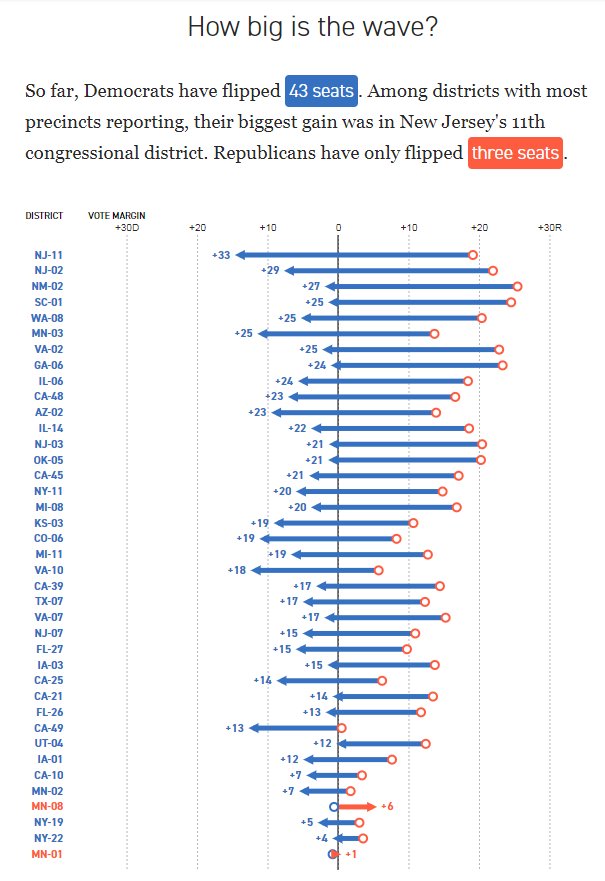
235*

Cox’s victory also means that — barring the outcome of the shady race in North Carolina’s 9th congressional district, which may require a new election after allegations of election fraud — Democrats are slated to have a 35-seat edge in the new House.
JUST IN: TJ Cox (D) is apparent winner of California House 21, @NBCNews projects — a Democrat gain.
The results for the new US House are now Democrats 235 and Republicans 200.
This is a net gain of 40 seats for the Democrats.
— NBC Politics (@NBCPolitics) December 6, 2018
The 235-seat majority for House Democrats will exceed the 233 that Pelosi’s party enjoyed after the 2006 midterms, and is the most since reaching 258 during Obama’s presidency in 2009.
Though the GOP will obviously still hold the Senate and White House, the new House majority offers Democrats a number of checks on Trump’s administration for the first time. For example, the subpoena power that accompanies control of the House means the president will finally face real oversight.
Also, the Democratic majority provides crucial protection for special counsel Robert Mueller’s investigation into Russian interference in the 2016 U.S. election. Democrats will now “have the ability to compel production of evidence and to hold public hearings on any unresolved issue that might have fallen under Mueller’s purview, or even beyond” if Trump fires the special counsel or tries to bury its findings.
Democrats on the House Ways and Means Committee have made it clear they intend to seek the president’s tax returns, which Trump has obscured from the public even though disclosure was standard for all presidential candidates since Nixon. The committee chair can take it upon himself or herself to obtain “any taxpayer’s records from the IRS for confidential review.”
